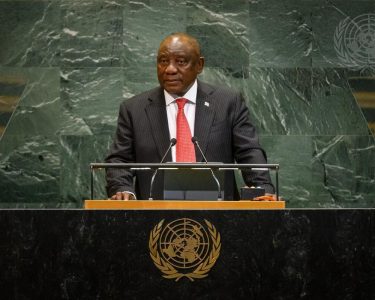
Countries, business and markets will have their ears clued to the global economic outlook report by the International Monetary Fund (IMF) with keen interest given the sluggish economic growth the world finds itself in.
The IMF will on Tuesday, 29 July 2025, release the World Economic Outlook update. Given the trade tensions emanating from the United States’ reciprocal tariff hikes, most economies across the world were affected by the trade war started by US President Donald Trump earlier this year.
The Managing Director of IMF Ms Kristalina Georgieva at the time warned that the trade war is not good for the global economy. She at the time called on the US to resolve its challenges with its trading partners constructively to avoid uncertainty. She said the IMF will assess the implications of the tariff measures on the global economy.
Trump has once again recently imposed tariff measures on certain countries including South Africa. The tariffs seem largely to be targeting BRICS member states in order to discourage them from implementing a currency opposed to the US Dollar.
“We are still assessing the macroeconomic implications of the announced tariff measures, but they clearly represent a significant risk to the global outlook at a time of sluggish growth. It is important to avoid steps that could further harm the world economy. We appeal to the United States and its trading partners to work constructively to resolve trade tensions and reduce uncertainty,” said Georgieva at that time.
The First Deputy Managing Director of the IMF Ms Gita Gopinath expressed concern over global policy uncertainty during the G20 meeting for Ministers of Finance and Central Bank Governors in South Africa on 18 July 2025.
“Our April WEO forecast projected global growth of 2.8 percent in 2025 and 3.0 percent in 2026, well below the historical average of 3.7 percent. This included significant downgrades to major economies such as the U.S. and China, owing to greater policy uncertainty, trade tensions, and softer demand momentum. Global headline inflation was projected to decline, but at a slower pace, reaching 4.3 percent in 2025 and 3.6 percent in 2026.
Since April, economic indicators reflect a complex backdrop shaped by trade tensions. We have seen strong evidence of front-loading ahead of tariff increases and some trade diversion. We have also seen an improvement in global financial conditions as select trade deals lowered average tariffs. On inflation, cooling demand and falling energy prices point to a continued decline, albeit with variation across countries,” said Gita Gopinath.
The world will be watching with keen interest to see what the future holds for their respective countries and investments.





